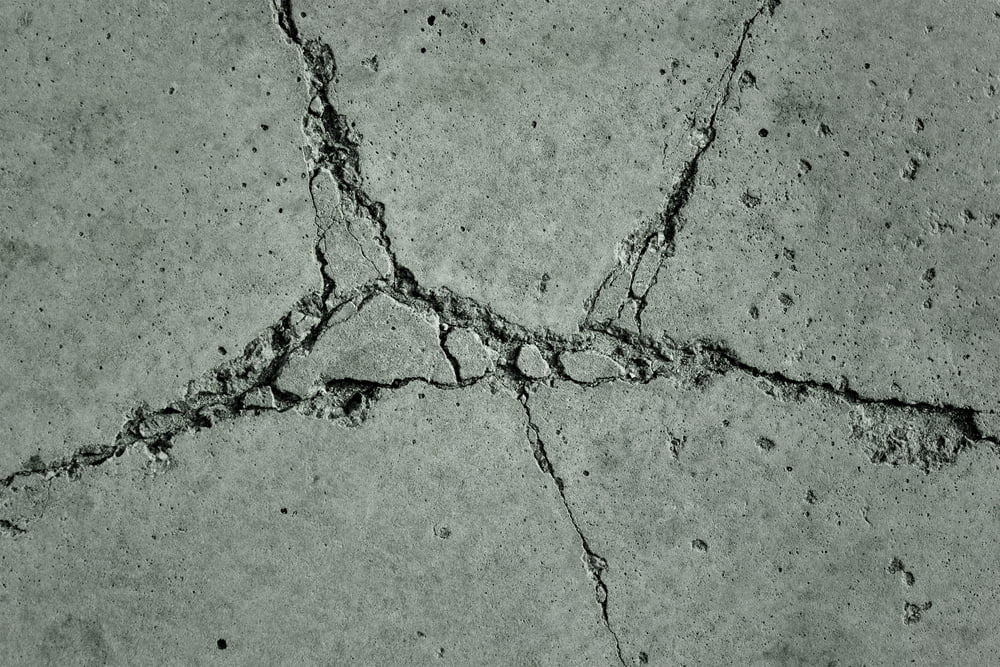Cracks In Walls – Wall Crack Causes And Costs
Buying your dream Brisbane property in the perfect area but your building inspector has flagged some cracks in the walls? Brisbane home buyers be wary!
Andrew’s Expert Advice on Wall Cracks: Cracks can mean nothing, or it can mean major structural defects. You need a professional that knows the difference. Cracks can also be caused by many different factors – flooding, trees, weather, construction and more. You need someone with a good understanding of the area to detect the root cause. So, call in the expert. I’ve spent years training my professional eye inspecting 25,000 homes across Brisbane’s suburbs – there isn’t a house type or landscape I haven’t seen. I’ll make sure you know whether a wall crack is something to worry about.
So, how can you tell if an unsightly little crack will become a great yawning rift in your living room wall over time? The freshly-painted walls you admired at the open-for-inspection might be hiding a potential Grand Canyon of a crack.
It’s essential to know if a wall crack can be easily fixed with a bit of strategically-placed filler and a lick of paint or whether costly structural repairs to your home are called for. Underestimate the seriousness of cracks in walls and you might find yourself without a roof over your head.
Do cracks in the wall indicate a structural problem?
Not all cracks indicate a serious structural problem – some small hairline cracks may be purely cosmetic easily addressed with filler and paint. However, large gaping cracks can be indicators of more costly structural or foundation problems that require the intervention of a structural engineer. Your building inspection report will provide an assessment of the severity and likely cause of the cracks in your walls, some of which are discussed in further detail below.
Types of wall cracks
Wall cracks fall into three main categories:
- Interior wall cracks such as cracks in the plasterboard or gyprock;
- Exterior wall cracks such as cracks in the brickwork, surface or rendering of external walls;
- Cracks in foundation walls.
All three can be serious and symptomatic of structural failure. How serious the problem is can really only be assessed by looking at:
- The location of the wall crack;
- Whether it is a jagged, horizontal or vertical wall crack;
- Whether there is separation in the materials used to construct the wall or separation of the wall from the framework;
- What caused the wall crack;
- Whether that cause is ongoing and/or whether there is likely to be a recurrence.
Gaping cracks are a good indicator of a serious structural problem. Zig-zag cracks or stair-step cracks following the mortar line in the brick walls of your property may point to a structural defect in your property.
The problem might be particularly serious if you have a complete separation in the mortar or cement between bricks. If you can see through a crack or if a broken brick is able to be wiggled or removed, it’s definitely time to call the experts as a matter of priority.
What causes cracks on internal walls?
Small hairline cracks in plaster walls can be purely cosmetic and caused by the slight contraction and expansion of the wood framing of the house during seasonal changes. Other cracks in internal walls may be indicators of more serious underlying issues such as subsidence, poor initial design or structural and foundational defects as discussed further below. Cracks in the wall at building inspection may necessitate expert intervention that can be costly and not always covered by insurance.
What causes horizontal cracks in buildings?
While fine hairline horizontal cracks in plaster may be due simply to shrinkage in the plaster, other horizontal cracks are more serious. Horizontal cracks in the wall identified during a building inspection are commonly caused by unbalanced soil pressure on concrete block foundation walls. Other horizontal cracks in walls may be caused by the pressure of a failing wall or indicative of load bearing problems and are a safety concern.
The causes of wall cracks
Tracking down the cause or causes of wall cracks is the first step in making any assessment as to the seriousness and cost of repairing wall cracks. Likely causes might include some of the following.
Settling and subsidence
Some degree of excavation of the soil is usually required when a home is first built. How much excavation work has been carried out will vary with the type of home you have. Some types of homes require more soil disruption than others in the course of their construction. Disturbed soil will become compacted and settle over time, causing a wall to crack. This process can take months or even years to occur. Natural settling will often cause narrow vertical cracks as opposed to big jagged cracks.
Minor settling is a normal process that occurs over time. However, significant downward motion in the soil (subsidence) under a wall may create structural faults. Significant subsidence can occur when soil is washed away (for example through a gradual leak or sudden flooding), compacts too much or collapses. Sink holes are a dramatic example of this.
Reactive soils
A reactive soil is a type of soil that expands dramatically when moist and contract when dry. Clay is just one example of a reactive soil. Non-reactive soil types include sand and gravel. Soil testing can assist in identifying whether your soil is reactive and might be contributing to your wall cracks.
Climate and seasonal changes
Climate and seasonal changes, such as drought and flood, can cause dramatic contraction and expansion of the soil or changes in the water table far below a property leading to wall cracking.
Excavation and construction works in your area
If you live in an area such as a new housing estate or in close proximity to a construction site or a quarry then you may experience wall cracking. The use of heavy machinery, vibration, excessive mechanical compaction of the soil or blasting (the use of explosives to excavate) can all cause your walls to crack. If your wall cracks appear following construction in your area you should seek an urgent assessment of the cracks and legal advice.
Similarly, earth tremors and earthquakes, though a fairly infrequent occurrence in Australia, can also contribute to wall cracks appearing.
Poor initial design or poorly-constructed extension work
Wall cracking can also occur in circumstances where your property or part of it (eg. an extension) has been poorly-designed or constructed. Too much weight on a load-bearing wall can contribute to wall cracks. Inferior, flawed or faulty building materials or under engineered footing design can also contribute to the emergence 0f wall cracks.
Water damage
Blocked gutters, flood damage, garden sprinklers, blocked or leaking pipes can all cause wall cracks and they can have the effect of saturating or even washing away soil.
Trees in close proximity to the property
Trees often have invasive root structures that can also contribute to wall cracking. You should ensure that you do not have anything other than small shrubs or bushes in close proximity to your walls. Aside from destructive roots, trees can also contribute to wall cracking by removing water from the soil and affecting the soil’s moisture content.
The removal of a large tree from an area that is in close proximity to your walls may cause cracking because it can destabilise the soil in the space previously occupied by the root system. It can also lead to changes in the moisture levels of the soil or settling over time.
Degradation of building materials
Nothing lasts forever, and building materials are no exception to that rule. Gravity, weathering, rotting or poor maintenance can all take their toll on building materials. When a building material starts to degrade, its structural integrity might be undermined, causing it to succumb to gravity. This can cause wall cracks to appear. Concrete cancer is another possible culprit of wall cracking. This occurs when the steel reinforcements in concrete start to rust and degrade following exposure to moisture and salt.
Are the cracks in my wall serious?
The location, direction and severity of the cracks are good indicators of the seriousness of your cracking walls. It can be helpful to take photos and measurements of cracks to track the progress of any cracks over time. Some cracks in the wall can indicate very serious safety risks to you and your family. If cracks are accompanied by popping nails, screws and twisting, leaning or bowing of the walls it should be treated as a matter of urgency as this could indicate the imminent collapse of the wall. Qualified building inspectors can assist you to determine whether the cracks in your walls are serious and give you an estimate of the possible cost of remediation.
When to worry about wall cracks
How do you know when you should start worrying about your wall cracks? The location, direction and extensiveness of wall cracks are a good indicator of their seriousness. There are often other tell-tale signs of a bigger problem that accompany wall cracks.
Changes in functionality of doors and windows are a good indicator of a serious structural problem. If your doors and windows are sticking or can’t be opened or closed and it’s not because of paintwork or other more benign causes, then you may have a structural problem.
Nail popping or visible nails or screws appearing in the walls are also a sign that all is not well. Cracks in places like the ceiling, where the ceiling meets the walls, or even in the slab are also a cause for concern.
An uneven floor should ring alarm bells. If you roll a ball across the floor and it doesn’t travel in a straight line your floor line may be tilting.
Thee twisting of a wall or the wall leaning or bowing are matters that may indicate a problem or potentially in extreme cases imminent collapse of a wall. You should treat it with urgency because it can pose a significant risk to your family’s safety.
Repairing and sealing wall cracks
There are many options for repairing wall cracks. It’s relatively easy to hide wall cracks if they are hairline cracks. Minor cracking that is purely cosmetic can be repaired or sealed with filler and paint.
However, if your wall cracks are caused by an underlying structural defect then repairs can be much more costly, time-consuming and inconvenient. The longer you wait, the more expensive the problem becomes. Repair options for significant wall cracks necessitate getting an expert assessment of the underlying cause of the crack to be addressed first. The repair process may include:
- Reblocking or restumping: This involves replacing the deteriorating steel, concrete or timber stumps with new stumps where the original stumps may have rotted or been attacked by termites or succumb to corrosion damage.
- Levelling and underpinning: Underpinning means stabilising your house footings. This process can involve having your foundations excavated and new concrete poured or injected into the site or underneath a foundation wall so as to bring it up to its original level.
- Demolition and reconstruction: In some extreme cases, the dismantling and rebuilding of a wall may be the best solution to address the causes of wall cracking where there is a serious underlying structural defect.
Only an expert can advise you as to your best options. This may also call for the involvement of multiple tradespeople including builders, plumbers or tree loppers.
Costs of wall cracking
Wall cracks can be very expensive to repair if there are structural problems involved. If you ignore wall cracks, however, the costs can be much greater; you may find yourself with a home that becomes completely uninhabitable or even condemned.
Your insurance policy may not always cover the costs of repairing cracks or addressing the underlying causes. You could find yourself saddled with the costs of relocation and renting an alternative property on top of your existing mortgage commitments. Fixing wall cracks and their underlying causes as soon as you notice them will save you money in the long run.
Wall cracks – What next?
Be proactive about wall cracks. Document them by taking photographs and include a ruler in the frame of the photo so that you can compare and track the progress of any cracks over time. Make sure that the obvious causes are eliminated.
Contact a qualified building inspector for an assessment of the severity and likely cause of cracks in your walls. They can assist you to formulate a plan of attack and give you estimation of the likely costs of repairs. Protecting your family’s safety and your financial investment is paramount.
Worried about cracks in your walls of the home you are about to purchase? Contact Action Property Inspections to discuss your concerns today on 1800 642 465.












